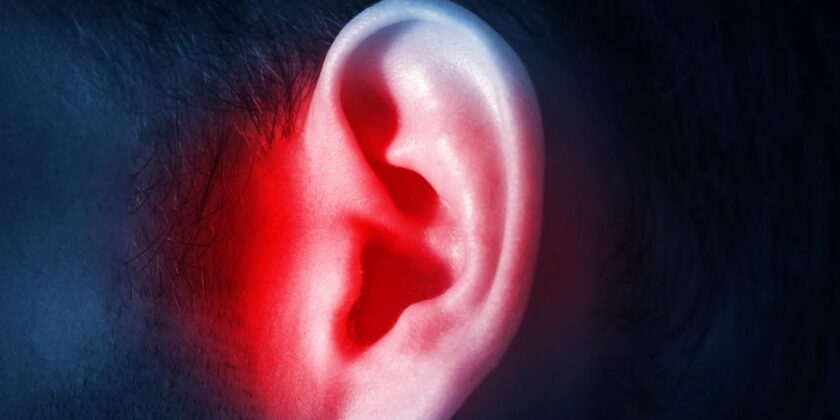Rare Hearing Loss: Exploring the Little-Known Underlying Reasons
The Hidden Causes of Rare Sensorineural Nerve Hearing Defects?
One of the most prevalent forms of hearing loss is sensory noise deficiency (SNHL) caused by injury to the inner ear or the auditory nerve. Although SNHL is typically attributed to age or noise, there are also uncommon causes of sensorineural nerve loss that are genetic, medical or trauma-related. This blog explores these uncommon causes and helps to understand the causes of hearing loss and what can be done to manage or cure the condition.
What is Sensorineural Nerve Loss?
Sensorineural hearing loss happens when the sensory cells of the inner ear (cochlea) or the auditory nerve that sends sounds to the brain are damaged. In contrast to conductive hearing loss (associated with damage to the outer or middle ear), sensorineural hearing loss is typically irreversible, although aids, cochlear implants and other therapies may alleviate its effects.
Rare Signs of Sensorineural Nerve Deafness
Genetics Some people carry genetic mutations that can impact the growth and function of the cochlea or auditory nerve. These genetic defects can cause permanent hearing loss or gradual hearing loss. Hereditary SNHL is usually linked to certain genes (for example, the gene GJB2).
Autoimmune Inner Ear Disease (AIED) AIED is a condition where the body’s immune system mistakenly attacks the inner ear, triggering inflammation and damage to the eardrum. It can lead to accelerated and unpredictable sensorineural hearing loss, so early detection and intervention are essential.
Meningitis Meningitis, in particular bacterial meningitis, can cause inflammation of the membranes that cover the brain and spinal cord. If the infection progresses into the inner ear, it can damage the cochlea and auditory nerve and permanently affect hearing.
Ototoxic Medicines Some medications, including chemotherapy (cisplatin) or high levels of aspirin, can be harmful to the ear’s sensory cells. Ototoxicity will cause irreversible damage to the cochlea, resulting in sensorineural hearing loss.
Traumatic Head Injuries to the head, including fractures of temporal bone, can result in damage to inner ear structures and auditory nerve. Sometimes, trauma causes rapid or permanent loss of hearing, depending on the extent of injury.
Viral Infections Infections such as mumps, measles or herpes simplex can infect the inner ear and cause sensorineural loss. These infections can inflame or directly injure the hearing system, leaving the victim permanently hearing-impaired.
Acoustic Neuroma An acoustic neuroma (or vestibular schwannoma) is a benign tumour that arises on the auditory nerve. This tumour may engorge the nerve, causing gradual deafness, tinnitus and balance issues.
Presbycusis While not uncommon, presbycusis (geriatric hearing loss) can sometimes have untypical causes – for instance, an imbalance of genes and environment leading to premature hearing loss in the elderly.
Diagnosing Rare Sensorineural Hearing Loss
Identifying rare sensorineural hearing loss requires an evaluation by an otolaryngologist (ENT specialist) and an audiologist. Tests may include:
Pure Tone Audiometry: Measure sensitivity at different frequencies.
Otoacoustic Emissions (OAE): To assess whether damage has occurred to the cochlea’s sensory cells.
Auditory Brainstem Response (ABR): Measures the activity of the auditory nerve.
Imaging: MRI or CT scans for structural abnormalities or tumors such as acoustic neuromas.
Treatment and Management
The diagnosis and treatment of rare sensorineural nerve deafness is affected by several factors:
Genetic Counseling: Genetic counseling may be provided for hereditary SNHL so that families are aware of the condition and treatment options.
Immunosuppressive Medicine: If autoimmune inner ear disease is present, steroids or other immunosuppressive medications may reduce inflammation.
Cochlear Implants: For severe SNHL, the use of cochlear implants can help to circumvent damaged structures in the inner ear and allow for speech.
Medicines and surgery: Infections such as meningitis or acoustic neuroma require antibiotics, antiviral therapies or surgical procedures to treat the underlying disease and ward off infection.
FAQ Section
1. — What are the most prevalent causes of sensorineural hearing loss?
Ageing (presbycusis), noise, and genetics are the main causes. Autoimmune conditions, head trauma, and infection are uncommon causes.
2. What are the criteria for rare sensorineural hearing loss?
Diagnoses include hearing evaluations, MRI or CT scans and, sometimes, genetic analysis for root causes such as tumours or mutations.
3. Are rare sensorineural hearing losses curable?
Even though the hearing loss is usually irreversible, interventions such as hearing aids, cochlear implants or medications can ease symptoms or treat the underlying condition.
4. Is sensorineural hearing loss reversible?
Sensorineural hearing loss is often irreversible, because it occurs through injury to the sensory cells or auditory nerve. But there are treatments that can help restore hearing or even reverse it.
5. What prevents rare sensorineural hearing loss?
Prevention depends on the cause. Reducing exposure to ototoxic medications, shielding ears from loud noise, and avoiding conditions such as autoimmune disorders can minimize the risk.
Conclusion
Rare sensorineural nerve hearing loss can be caused by many things, such as genetics, infection, trauma, or even certain medications. The condition is potentially lifelong, but early detection and treatment can mitigate symptoms and increase living quality. When someone you know or yourself suffers from unexplained hearing loss, talk to your healthcare provider about causes and treatment options.
Do you want to learn more about case studies or treatments?



